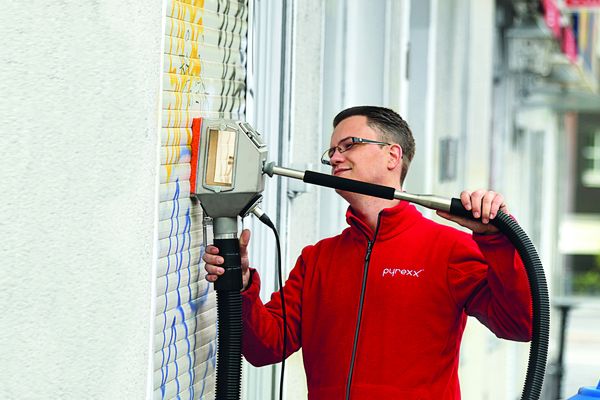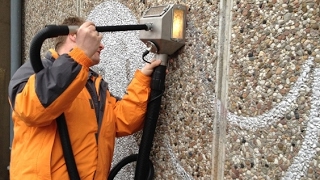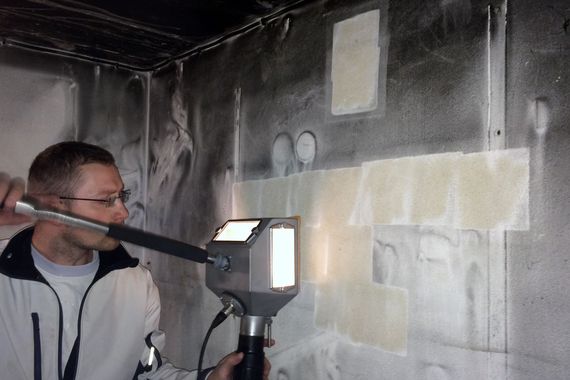Facade cleaning without high pressure - is that possible?
Yes, it works very well if you use the right method. The high-pressure hot water variant works in the same way as the manual method with a chemical agent for graffiti removal. The chemical solution is applied to the surface to be cleaned and then removed with a high-pressure jet. The method can by no means be described as gentle or ecological. On the one hand, the substrate can be damaged, on the other hand, the environment is considerably polluted by this technique. Therefore, according to current legislation, a costly collection of the contaminated water is always necessary, which makes the procedure considerably more expensive. With the low-pressure wet blasting method, a mixture of air and water and possibly a blasting agent is blasted onto the façade. Depending on the surface and type of soiling, the pressure is adjusted. The disadvantage of this method is that components of the plaster can be exposed. Often, distinct shadows appear on the walls and facades.
With the vacuum blasting method, only negative pressure is used. However, this method differs considerably from the aforementioned methods. The vacuum sucks the abrasive out of the storage container. In the blasting lance, the granulate is accelerated to approx. 400 km/h and hits the graffiti to be removed. The paint is loosened by the impact of the granulate. The advantage of the method is that it is a closed circuit, as the blasting material is automatically sucked back into the container through a hose by means of negative pressure. The dirt and paint particles are filtered out in a cyclone. The granulate goes back into the circuit. The cleaning system is easy to operate so that it can also be used by non-professionals. Vacuum blasting is also called a minimally abrasive process. This makes it ideal for very sensitive surfaces.


![[Translate to English:] ökologisch Fassaden reinigen ohne Wasser ökologisch Fassaden reinigen](/fileadmin/_processed_/3/f/csm_graffiti-auf-tuer_7a04136e18.jpg)








